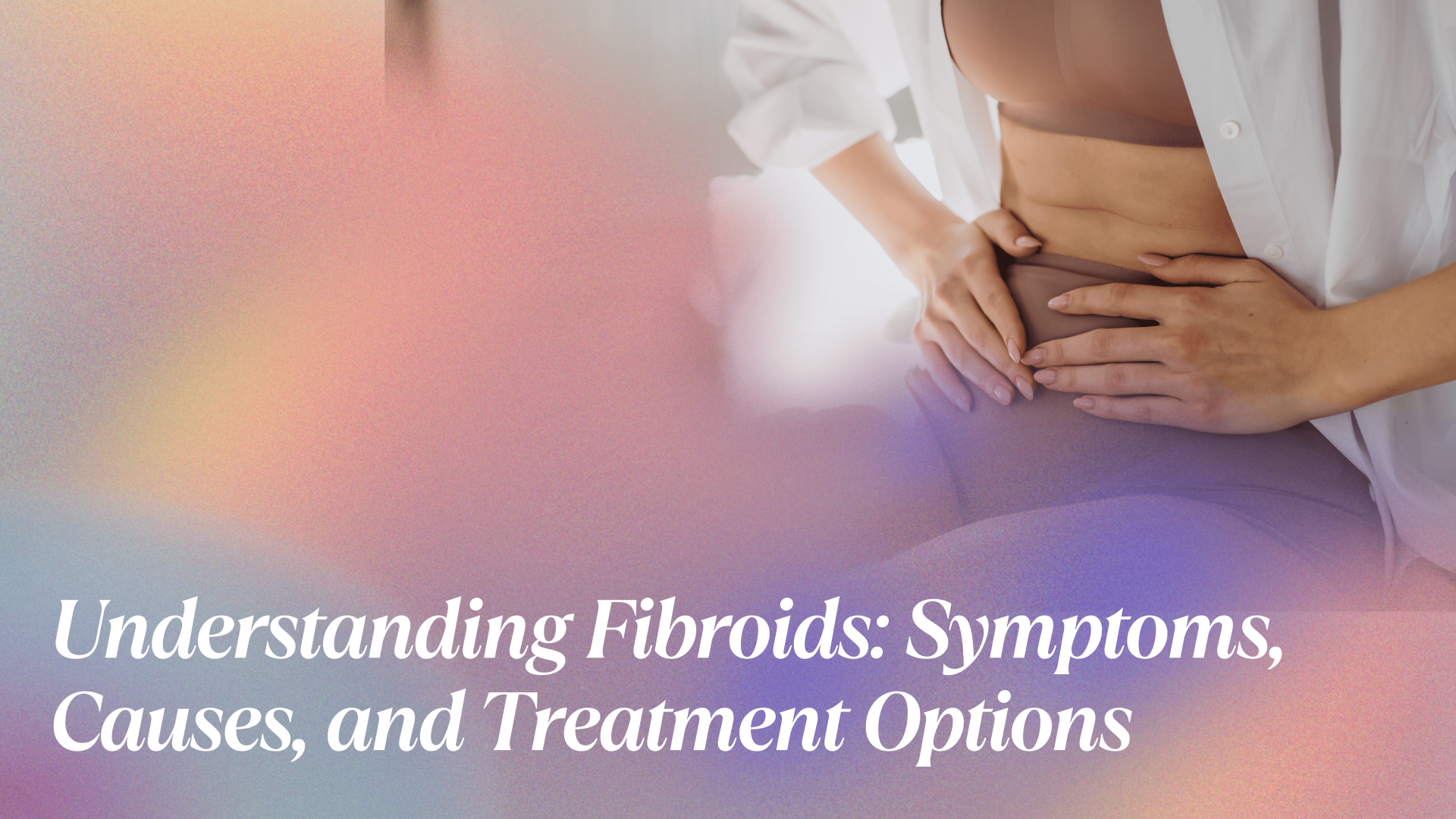Introduction
Fibroids, also known as uterine myomas or leiomyomas, are composed of muscle and fibrous tissue that develop in or around the uterus. These benign growths vary in size and can be found in different locations within the uterine wall. Despite their prevalence, many women may be unaware of their presence, as these tumors often do not cause symptoms. In this context, understanding the nature and potential impact of fibroids is essential for women’s health and well-being. This introduction sets the stage for exploring the characteristics, symptoms, diagnosis, and management of uterine myomas, highlighting the importance of awareness and proactive healthcare practices.
What symptoms do women experience ?
Fibroids can manifest in various ways, causing symptoms such as:
- Heavy or painful periods
- Abdominal pain
- Lower back pain
- Frequent urination
- Constipation
- Pain or discomfort during sex.
- Heavy or painful periods: These growths can lead to heavier menstrual bleeding than usual, often accompanied by severe menstrual cramps. The increased blood flow may require more frequent changes of sanitary products and can lead to fatigue and anemia due to blood loss.
- Abdominal pain: Uterine myomas may cause dull, aching pain or discomfort in the lower abdomen. This pain can vary in intensity and may be constant or intermittent, depending on the size and location of the tumors. In some cases, these growths can cause sharp, stabbing pains if they press against nearby organs or tissues.
- Lower back pain: Tumors located in the back wall of the uterus can put pressure on nearby nerves, leading to lower back pain. This pain may radiate down the legs and worsen during menstruation or extended periods of standing or sitting.
- Frequent urination: Uterine myomas can compress the bladder, leading to increased urinary frequency and urgency. Women may feel the need to urinate more frequently than usual, even if their bladder is not full. This symptom can disrupt daily routines and sleep patterns, causing discomfort and inconvenience.
- Constipation: Large growths can press against the rectum or intestines, causing constipation or difficulty passing stools. Individuals may experience bloating, abdominal discomfort, and infrequent bowel movements due to the pressure exerted by fibroids on the digestive system.
- Pain or discomfort during sex: Uterine tumors located near the cervix or within the uterus can lead to pain or discomfort during sexual intercourse. Women may experience deep pelvic pain or sensations of pressure or fullness, making sexual activity uncomfortable or painful.
Each of these symptoms can vary in severity and may be influenced by factors such as the size, number, and location of the growths. It’s essential for women experiencing any of these symptoms to consult with a healthcare provider for proper evaluation and management.
Why do fibroids occur?
The exact origin of these tumors remains uncertain, although they are associated with the hormone estrogen, which is vital to female reproduction and synthesized by the ovaries, the female reproductive organs. Uterine myomas typically emerge during a woman’s reproductive years, usually between the ages of 16 and 50, coinciding with peak estrogen levels. Conversely, they often diminish in size when estrogen levels decrease, such as during menopause or when menstruation ceases.
These growths are prevalent, affecting approximately two-thirds of women at some stage in their lives, with the highest incidence observed among women aged 30 to 50. Additionally, there appears to be a heightened occurrence among overweight or obese women, possibly due to elevated estrogen levels associated with excess weight. Conversely, women who have undergone pregnancy tend to have a reduced risk of developing myomas.
What are the different types of fibroids?
These growths can develop anywhere within the uterus and can showcase significant variation in their size. While some may be as small as a pea, others can grow significantly large.
The primary types of fibroids include:
- Intramural fibroids: The most common type of growths that develop within the muscular wall of the uterus.
- Subserosal fibroids: These tumors grow outside the uterine wall into the pelvic cavity and can reach considerable sizes.
- Submucosal fibroids: These growths form within the muscular layer under the inner lining of the uterus and protrude into the uterine cavity.
In certain instances, subserosal or submucosal fibroids may be connected to the uterus through a narrow tissue stalk which lead to uterine fibroids.
How to treat fibroids?
Uterine myomas typically do not require treatment if they are asymptomatic, meaning they are not causing any noticeable symptoms. In many cases, especially after menopause, these growths may naturally decrease in size without the need for medical intervention. However, if fibroids do cause symptoms, such as heavy menstrual bleeding, pelvic pain, or pressure on nearby organs, treatment options are available. Initially, many healthcare providers may recommend medications aimed at alleviating the symptoms, such as nonsteroidal anti-inflammatory drugs (NSAIDs) to manage pain or hormonal medications to regulate menstrual bleeding.
For individuals experiencing persistent or severe symptoms, medications designed to shrink these tumors may be prescribed. These medications, such as gonadotropin-releasing hormone agonists (GnRH agonists), work by temporarily inducing a menopause-like state to reduce estrogen levels, thereby shrinking myomas.
If medication therapy proves ineffective or if the growths significantly impact a person’s quality of life, surgical interventions or less invasive procedures may be recommended.
These treatment options range from minimally invasive procedures like uterine artery embolization (UAE) or focused ultrasound surgery (FUS) to surgical removal of the tumors (myomectomy) or even hysterectomy, the surgical removal of the uterus. Ultimately, the choice of treatment depends on various factors, including the severity of symptoms, the size and location of the growths, and the individual’s reproductive goals.
Conclusion
Ultimately, raising awareness about uterine myomas and advocating for access to comprehensive healthcare services is crucial for supporting women’s reproductive health and promoting overall wellness. By addressing these growths effectively, women can take control of their health and lead fulfilling lives free from the burden of symptomatic fibroids.
Resources : https://www.nhs.uk/conditions/fibroids/





 No products in the cart.
No products in the cart.